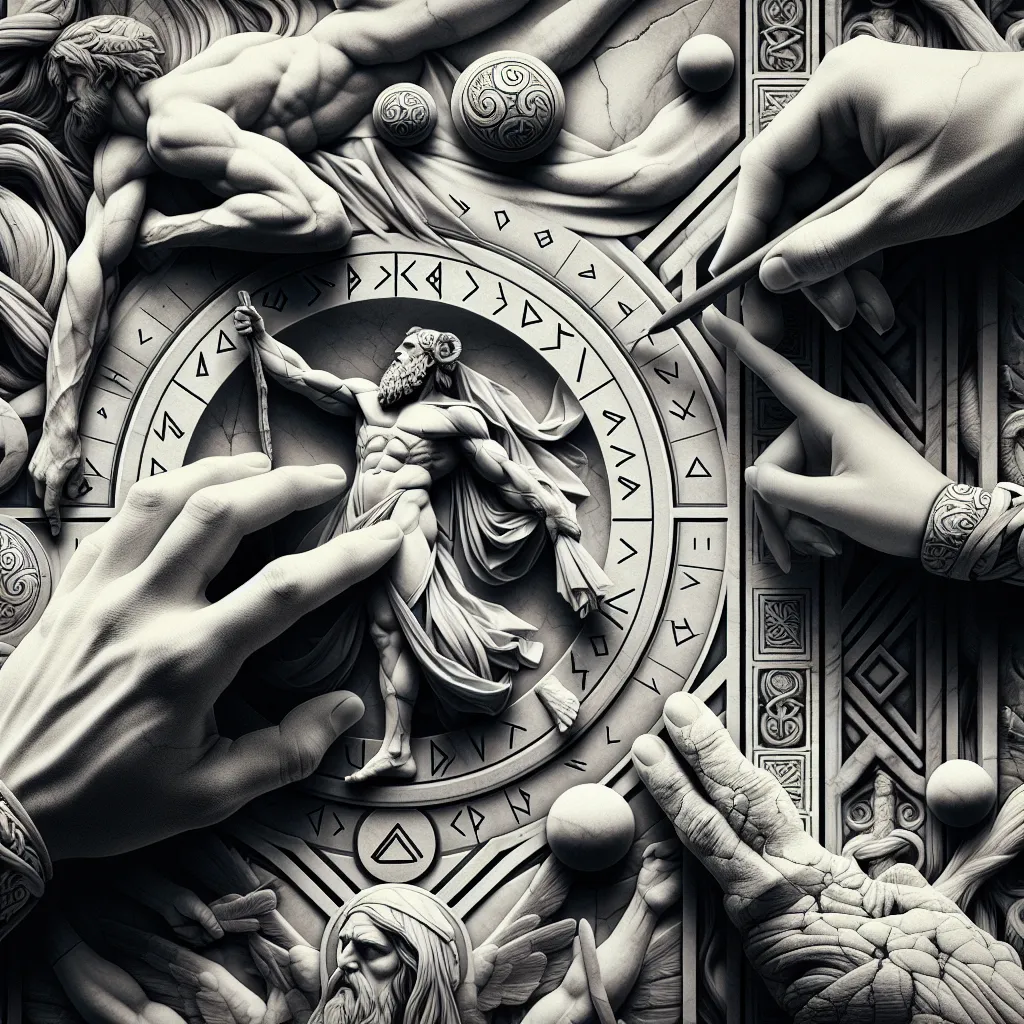
- Published on
- Authors

- Name
- You
The Runes: Divination and Magical Practices in Norse Tradition
Introduction
Runes, the ancient alphabets used by Germanic peoples, have long captivated the imagination of both scholars and mystics. These symbols are not mere letters; they are imbued with potent magical and divinatory power, woven into the very fabric of Norse spiritual practices. This article merges advanced scientific understandings with timeless mystical wisdom to delve into the richness of runes, presenting a comprehensive view of their significance.
History of Runes
Origins and Alphabet
The runic alphabets, known as Futharks (named for their first six letters: F, U, Þ, A, R, K), originate from proto-Germanic tribes as early as the 2nd century CE. The most commonly known are the Elder Futhark, Younger Futhark, and Anglo-Saxon Futhorc. Each rune carries intrinsic meanings, often linked to natural elements or deities.
| Rune | Letter | Meaning | Element |
|---|---|---|---|
| ᚠ (Fehu) | F | Wealth | Fire |
| ᚢ (Uruz) | U | Strength | Earth |
| ᚦ (Thurisaz) | Þ | Giant | Chaos |
| ᚨ (Ansuz) | A | Odin | Wisdom |
| ᚱ (Raido) | R | Journey | Journey |
| ᚲ (Kaunan) | K | Torch | Fire |
The Eddas and Sagas
Norse literature, including works like the Poetic Edda and various Sagas, often references runes not just as communicative tools but as potent symbols of power. Odin, the chief of the Aesir gods, is a central figure in rune lore. The Hávamál recounts how Odin hung from Yggdrasil, the World Tree, for nine nights to gain the wisdom of the runes.
Divination with Runes
The Art of Casting Runes
Divination with runes, or rune casting, involves drawing runes randomly from a pouch and interpreting them based on their positions and inherent meanings. Each casting method varies in complexity, from simple single-rune draws to intricate layouts resembling those used in tarot.
| Method | Description |
|---|---|
| Single Rune Draw | Provides an immediate answer or general guidance on a specific question. |
| Three-Rune Spread | Offers insight into the past, present, and future. |
| Nine-Rune Layout | A complex spread for in-depth analysis, often used for annual readings. |
Interpretative Science and Symbolism
The interpretations of runes can also benefit from modern psychological theories. Carl Jungs Collective Unconscious and Archetypes provide a framework wherein runes act as symbols tapping into shared human experiences and instincts. This overlap between the mystical and the psychological offers a bridge between ancient wisdom and contemporary understanding.
Magical Inscriptions
Bind-Runes and Galdr
Ruins can also be used in magical inscriptions through bind-runes, which are combinations of runes crafted to amplify their power and intent. Galdr, the practice of chanting or singing runes, adds another layer of mysticism, believed to activate the runic energy through vocalization.
- Example of a Bind-Rune: Combining ᚠ (Fehu for wealth) and ᚲ (Kaunan for creativity) to manifest prosperity in artistic endeavors.
- Galdr Example: Chanting the rune name "Fehu" repetitively to attract financial success.
Scientific Insights into Runic Practices
Neurological and Acoustic Dimensions
Recent studies suggest that the act of chanting and the geometric visualization of runes can engage specific neural pathways, potentially altering states of consciousness. Cymatics, the study of visible sound and vibration, allows for the exploration of how rune chants might affect matter, revealing patterns akin to traditional rune shapes.
Conclusion
The runes represent a convergence of history, spirituality, and science. From their ancient origins as a communication tool to their modern use in divination and magic, runes continue to captivate and inspire. By bridging mystical traditions with contemporary scientific concepts, we gain a richer, more nuanced understanding of these enigmatic symbols, ensuring their legacy endures.
In the intersections of these fields, runes invite us to explore the mysteries of existence, offering a profound tool for introspection, guidance, and transformation.
Recommended Reading:
- The Poetic Edda - Translations and annotations by Carolyne Larrington.
- Runes: An Introduction by Ralph Blum.
- Man and His Symbols by Carl G. Jung.
Author's Note: This exploration of the runes is a blend of historical scholarship and modern insights, intended to honor the depth and complexity of Norse culture and its esoteric practices.
